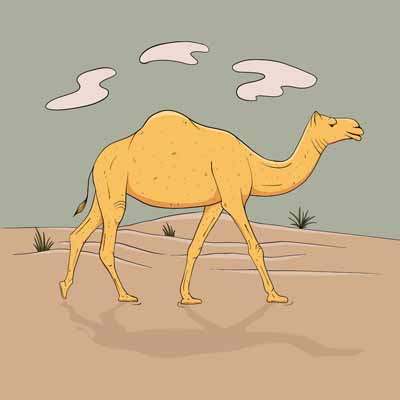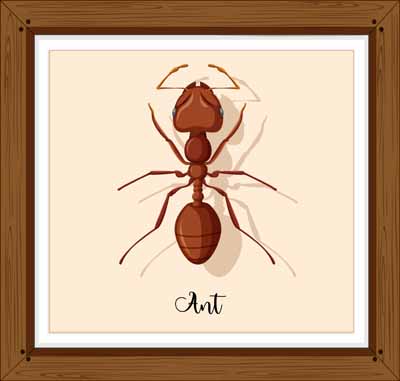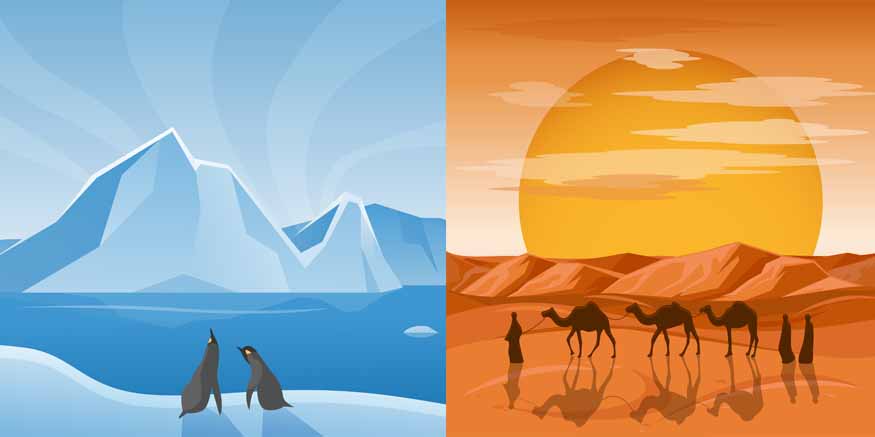Desert animals are species that have evolved to survive in desert environments. They possess several unique traits that set them apart from animals in other ecosystems. Globally, there are 23 deserts, each hosting a variety of desert-dwelling creatures. Deserts can be classified into two main types: hot and cold.
While we often picture a hot, sandy landscape when we think of deserts, the largest desert in the world is located in Antarctica. The characteristics of desert animals can vary significantly based on whether they inhabit a hot or cold desert. Even though deserts might seem desolate and lifeless, they are home to a diverse range of wildlife that has adapted to thrive in these tough environments.
Understanding the desert animal adaptations
Desert animals have developed amazing adaptations to live in some of the harshest conditions on the planet. A prime example is the camel, often called the “ship of the desert.” Camels have humps that store fat, which can be turned into water and energy when food and water are hard to find. They also have thick lips that let them eat prickly plants without getting hurt, and their long eyelashes and nostrils that can close help protect them from sandstorms. Additionally, camels have wide, padded feet that stop them from sinking into the sand, allowing them to cover great distances in the desert.
Another interesting desert creature is the fennec fox, famous for its big ears that serve several functions. These ears help cool the fox down and improve its hearing, making it easier to find prey hiding underground. The fennec fox has a coat that reflects sunlight during the day and keeps warmth during the chilly desert nights. Its kidneys are designed to save water, enabling it to go for long stretches without drinking, as it gets moisture from its food. These special adaptations highlight the incredible strength and cleverness of desert animals, allowing them to succeed in their challenging environments.
List of desert animal names
Camel: Camels are desert animals that can handle both hot and cold weather. They are perfectly adapted to life in the desert. You might have noticed the hump on their back, and they also have long necks. Did you know that the fat stored in their humps gives them energy? This is why they can go for long periods without food or water.

Peccary: When discussing how animals adapt to desert life, you should learn about the peccary, also known as javelina. These mammals enjoy eating prickly pears and other juicy plants. They can live off these plants until it rains and new food sources become available.
Black-tailed jackrabbits: It is important to remember that black-tailed jackrabbits are not the same as regular rabbits. They can be found in Mexico and the Western United States. When temperatures rise, they use their ears to help cool their blood. The unique traits of desert animals, like camels and hares, help them thrive in such tough environments.
Fire Ants: Have you ever spotted brown ants? Those are fire ants! They eat a variety of things, including birds, dead animals, seeds, and other insects, making them quite carnivorous. Be careful around them, though; they can sting both humans and animals. This sting is one of the ways desert animals protect themselves in their harsh habitats.

Roadrunner: You might recognise the Roadrunner from the cartoon. These birds are super-fast! They have a diverse diet that includes fruits, eggs, reptiles, insects, and snails. Interestingly, they can survive without drinking water. While they will sip some if it’s available, they don’t rely on it to live.
Desert Monitor: Desert monitors resemble lizards and have a very varied diet. They can eat almost anything, which is a bit unsettling since they swallow their food whole. Their diet includes birds, reptiles, eggs, and even small mammals.
The diversity of desert animal names and their unique adaptations highlight the incredible resilience and ingenuity of life in these harsh environments. From the majestic camel to the tiny fennec fox, each species has evolved specific traits that enable it to survive and thrive in the desert. These desert animal adaptations are not just fascinating biological phenomena; they also inspire us with their testament to the power of evolution and the tenacity of life.
At Mother’s Pet Kindergarten, we believe in fostering a deep appreciation for the natural world and its wonders. By understanding desert animals and their remarkable abilities, we can instil a sense of wonder and respect for the incredible diversity of life on our planet. Encouraging children to learn about these resilient creatures helps them develop a broader perspective on the challenges and triumphs of survival in nature.












Recent Comments